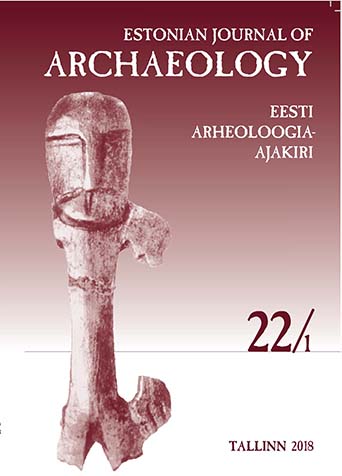SPEARHEADS FROM KOHTLA-VANAKÜLA FIND: REFINING EARLY IRON AGE (500 BC – AD 550) SPEARHEAD TYPO-CHRONOLOGY
IN THE EASTERN BALTIC
SPEARHEADS FROM KOHTLA-VANAKÜLA FIND: REFINING EARLY IRON AGE (500 BC – AD 550) SPEARHEAD TYPO-CHRONOLOGY
IN THE EASTERN BALTIC
Author(s): Andres Tvauri, Ester Oras, Ragnar SaageSubject(s): History, Archaeology, Ancient World
Published by: Teaduste Akadeemia Kirjastus
Summary/Abstract: During the investigations of Kohtla-Vanaküla, 140 spearheads or fragments of spearhead blades were collected. All spearheads from Kohtla are socketed and have a pointed-oval-shaped blade, only four examples are rhomboid. Based on radiocarbon dates the Kohtla spearheads most likely date from the Roman Iron Age. Kunda and Alulinna wealth deposits from north-eastern Estonia contain spearhead assemblages most similar to the ones from Kohtla. The earliest finds of the main spearhead types found in Kohtla are known from Finnish Early Roman Iron Age contexts where this type prevails exclusively. The Finnish finds thus also correlate rather well with the dates obtained from Kohtla. The fact that Kohtla spearheads bear the greatest resemblance namely with finds from Virumaa province and coastal area of Finland indicates that they might come from these regions. However, the Kohtla spearheads are one of the earliest examples of such spearhead types in Estonia allowing to better refine the chronological distribution of this weapon type in the eastern Baltic. Additionally, we present the first metallographic analysis of a spearhead from this time period. The analysis shows that the spearhead was made out of homogeneous steel of good quality, whilst steel was used throughout the weapon and not only on the cutting edge. In comparison with the analysis of socketed axe from the same site, this might be seen as a testament to the higher status of weapons compared to tools.
Journal: Eesti Arheoloogia Ajakiri
- Issue Year: 22/2018
- Issue No: 1
- Page Range: 32-50
- Page Count: 19
- Language: English

